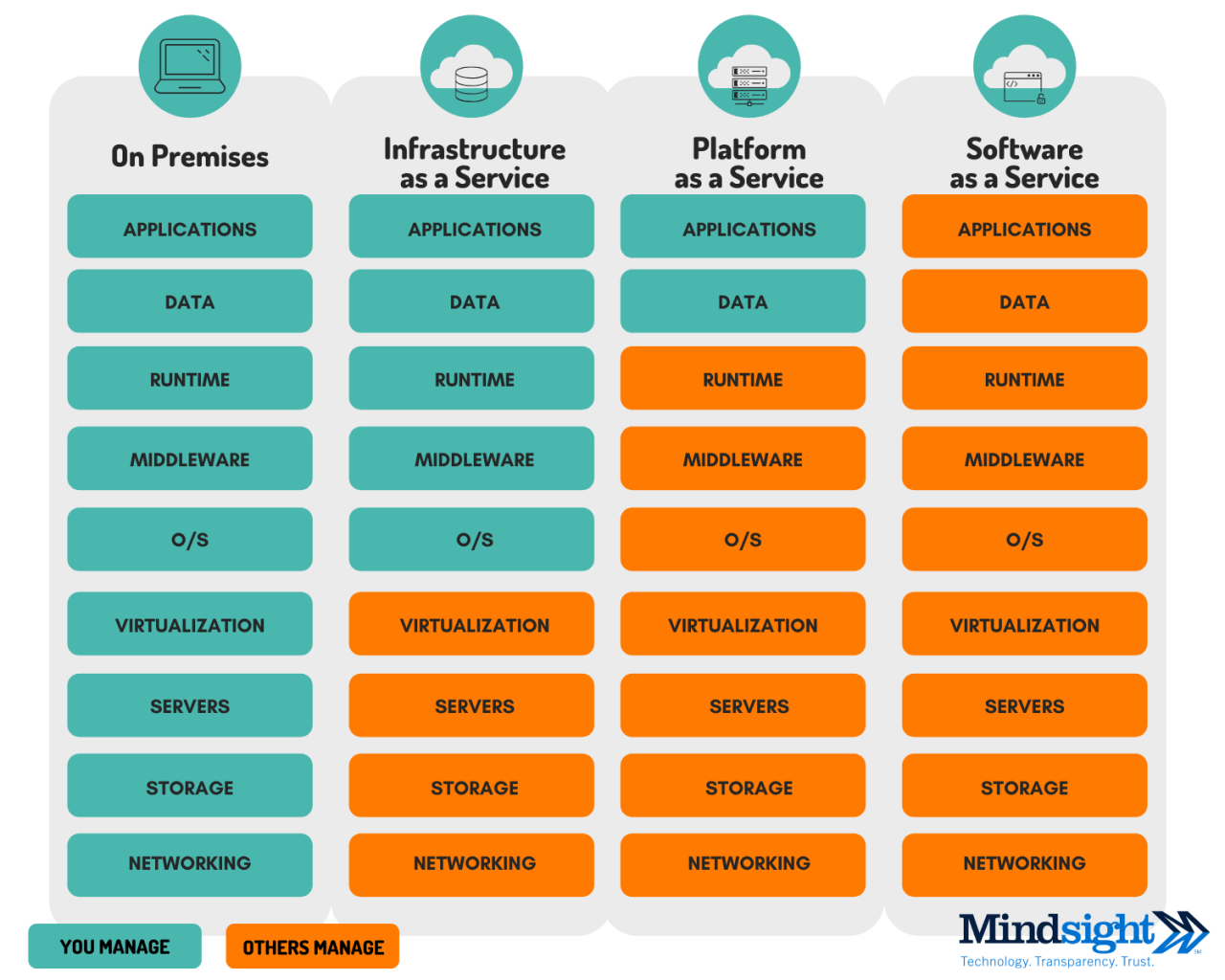Imagine building a house. You could buy the land, pour the foundation, frame the walls, and install the plumbing and electrical systems yourself. Or, you could rent the land, have a pre-built structure delivered, and simply customize the interior.
That’s essentially the difference between traditional IT infrastructure and the world of “as-a-Service.” Infrastructure as a Service (IaaS), Platform as a Service (PaaS), and Software as a Service (SaaS) are revolutionizing how businesses access and utilize technology, offering flexibility, scalability, and cost-effectiveness.
But navigating this landscape can be tricky. Which model is right for your organization? What are the pros and cons of each? This article will demystify IaaS, PaaS, and SaaS, exploring their core functionalities, highlighting their unique advantages, and offering practical guidance to help you make informed decisions about your cloud strategy.
Get ready to unlock the power of the cloud and discover which “as-a-Service” model best fits your needs.
Understanding IaaS, PaaS, and SaaS: A Cloud Computing Trio
Cloud computing has revolutionized how businesses operate, offering flexibility and cost-efficiency. Among the various cloud service models, IaaS, PaaS, and SaaS stand out. They represent different levels of abstraction and control. Picking the right one requires understanding what each offers.
These three models provide distinct benefits, each catering to diverse needs. IaaS provides the basic building blocks. PaaS offers a platform for app development. SaaS delivers ready-to-use software applications.
This article dives into the nuances of these services, examining their strengths and use cases. By exploring these models, we aim to empower you to make informed decisions. This will allow you to effectively leverage cloud computing for your specific requirements.
Infrastructure as a Service (IaaS)

IaaS offers the foundational IT resources over the internet. These resources include virtual machines, storage, and networks. Think of it as renting the raw materials to build your digital infrastructure.
With IaaS, you have ultimate control over the operating system, storage, and deployed applications. However, you are also responsible for managing these elements. It demands considerable technical expertise.
This model offers significant flexibility. You can scale resources up or down as required. This on-demand scalability makes it an appealing choice for organizations with fluctuating workloads.
IaaS is commonly adopted by startups and enterprises seeking to avoid the upfront costs of on-premise hardware. It is a compelling alternative for those with robust IT departments to handle management. Furthermore, it’s utilized for testing and development, storage, backup, and disaster recovery.
Platform as a Service (PaaS)
PaaS provides a complete platform for developing, running, and managing applications. It encompasses the hardware, software, and infrastructure required. Developers can focus on building apps, without worrying about the underlying infrastructure.
This service offers a collection of tools to streamline development workflows. Such tools involve code editors, debuggers, and deployment tools. It fosters collaboration and accelerates time-to-market.
PaaS supports multiple programming languages and frameworks. This makes it versatile for diverse development teams. It empowers developers to use their preferred tools without infrastructure constraints.
PaaS is popular among agile development teams seeking rapid app creation. It accelerates the development lifecycle. It simplifies deployments. Ultimately, it allows developers to focus on innovation and features.
Software as a Service (SaaS)
SaaS delivers software applications over the internet, on demand. Users access the software via a web browser or a dedicated app. The provider manages all underlying infrastructure and maintenance.
SaaS eliminates the need for local installation and upkeep. Users benefit from automatic updates and patches, ensuring access to the latest version. This ease of access makes SaaS attractive to many.
SaaS applications are usually priced on a subscription basis. This provides predictable costs and eliminates upfront investment. This model makes it accessible to businesses of all sizes.
Common SaaS applications include CRM (Customer Relationship Management), email marketing software, and collaboration tools. Their ease of use and accessibility make them integral to modern business operations. Consider products like Salesforce, Google Workspace, and Microsoft 365 as examples.
Comparing IaaS, PaaS, and SaaS: Key Differences
The key differentiation lies in the level of control and responsibility assumed by the user. IaaS grants maximum control over the infrastructure. PaaS simplifies the development process. SaaS provides a ready-to-use solution with minimal configuration.
Each model also has associated costs. IaaS involves managing infrastructure, leading to operational expenses. PaaS may have development costs. SaaS usually incurs subscription fees.
The table below highlights the key distinctions between the three. Consider the trade-offs to select the suitable solution for your needs. Remember that each offers different advantages.
| Feature | IaaS | PaaS | SaaS |
|---|---|---|---|
| Control | Maximum | Medium | Minimum |
| Management | You manage OS, middleware, etc. | Provider manages OS, middleware | Provider manages everything |
| Use Cases | Infrastructure control, Scalability | Application Development | Ready-to-use applications |
Ultimately, the selection depends on your expertise, priorities, and business goals. Consider all options before making a choice. Carefully evaluate requirements to determine the most beneficial selection.